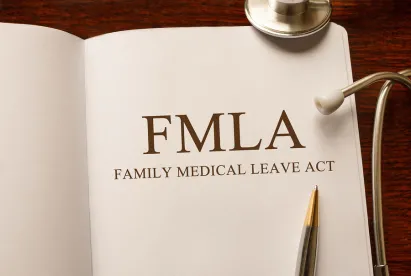In certain circumstances, an employee may begin a leave of absence prior to being eligible to take leave pursuant to the Family and Medical Leave Act (“FMLA”). What if, during the employee’s leave, she subsequently reaches her FMLA eligibility date? Does the employer have to offer FMLA to the employee – who was not eligible for FMLA at the start of her medical leave – when she reaches the 12-month, 1,250-hour requirement while out on leave?
Before addressing that specific question, it is helpful to review the FMLA’s basic framework.
Basic Framework:
The FMLA is a federal law requiring covered employers to provide eligible employees with job-protected, unpaid leave for certain qualified medical and family reasons, including, but not limited to, family illness, pregnancy, military family leave, and adoption. Employers are required to maintain health benefits for employees taking FMLA leave during the covered leave period and are prohibited from retaliating against an employee for exercising FMLA rights.
Under the FMLA, eligible employees are entitled to up to 12 weeks of leave. To be eligible for leave under the FMLA:
- An employee must have been employed with the employer for 12 months;
- The employee must have worked at least 1,250 hours during the 12 months prior to the start of FMLA leave; and
- The employer has employed 50 or more employees within a 75-mile radius of the worksite.
When an employee’s eligibility is triggered:
It isn't always easy to determine when an employee’s eligibility commences. For instance, Covered Employer hires Employee on May 1, 2017, and Employee works a full-time schedule. Employee requests leave pursuant to the FMLA for a serious health condition beginning on April 1, 2018, when she has worked more than 1,250 hours, but not yet worked a full 12 months for Covered Employer. Covered Employer has a policy that provides up to six weeks of non-FMLA leave for employees with serious health conditions. Per the Covered Employer’s leave policy, the Employee’s leave is approved to start on April 1, 2018, for the full six weeks, which continues beyond May 1, 2018. Is the employee entitled to an additional 12 weeks of FMLA-protected leave once she becomes eligible for FMLA leave on May 1, 2018?
Simply, yes. Under the FMLA, the determination of whether an employee has met the hours of service requirement and has been employed by the employer for a total of at least 12 months is made as of the date the FMLA leave is to start. Per the FMLA, an employee can be on non-FMLA leave when she satisfies the 12-month eligibility requirement, and, in that event, “any portion of the leave taken for an FMLA-qualifying reason after the employee meets the eligibility requirement would be FMLA leave."
Stated another way, an employer’s policies and/or practices determine whether to grant non-FMLA leave for an employee who is not yet eligible for FMLA leave (unless there is an applicable state family or medical leave law). But once an employee becomes eligible for FMLA leave, an employer may not count any non-FMLA leave taken prior to the employee’s eligibility date toward the employee’s guaranteed 12 weeks of FMLA leave.
Thus, in the example above, Employee is eligible for up to 12 additional weeks of FMLA leave as of May 1, 2018 (the eligibility date). Accordingly, Employee could potentially take leave for up to 16 weeks, which consists of four weeks of leave prior to her FMLA eligibility in April 2018, and up to an additional 12 weeks of FMLA leave beginning May 1, 2018.
The application of FMLA to real-life situations can be very complicated. It is prudent to consult with your employment attorneys when making FMLA-related decisions. Stay tuned to this blog for further clarification of the FMLA and other employment-related laws.




 />i
/>i

